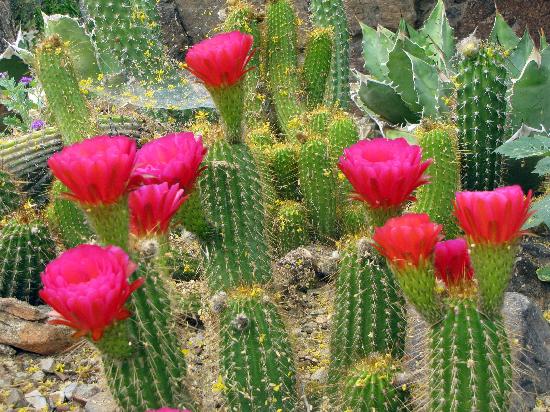Stamp: Prickly Pear cactus (Saint Vincent and The Grenadines 1999)
Prickly Pear cactus (Saint Vincent and The Grenadines 1999)
01 January (Saint Vincent and The Grenadines ) within release Revenue goes into circulation Stamp Prickly Pear cactus face value 10 East Caribbean cent
Stamp is square format.
$2 Grenadines of St. Vincent postage stamp of 1982 (SG 228) overprinted "REVENUE" and surcharged "10c" and obliterating block in black Revenue Reverend cat. no: R306 Despite the Grenadines inscription, this stamp was valid throughout the entire country.Also in the issue Revenue:
- Stamp - “Mary and de Baby weary” face value 10;
- Stamp - “Star above shine in de sky” face value 10;
- Stamp - American man of war face value 10;
- Stamp - Astronomer and telescope face value 10;
- Stamp - Ayres Turbo Thrush face value 10;
- Stamp - Boy and officer face value 10;
- Stamp - British man of war face value 10;
- Stamp - British troops in battle face value 10;
- Stamp - Carib hieroglyph face value 10;
- Stamp - Christmas 1981 face value 10;
- Stamp - Christmas 1981 face value 10;
- Stamp - Christmas 1982 face value 10;
- Stamp - Christmas 1983 face value 10;
- Stamp - Christmas 1984 face value 10;
- Stamp - Christmas 1984 face value 10;
- Stamp - Coconut plantation, husking coconuts face value 10;
- Stamp - Common Black Hawk (Buteogallus anthracinus) face value 10;
- Stamp - Copra drying frames face value 10;
- Stamp - Crayfishing face value 10;
- Stamp - Elegant Anemone (Actinoporus elegans) face value 10;
- Stamp - Emblem face value 10;
- Stamp - Emblem face value 10;
- Stamp - Flag of St Vincent and Commonwealth symbol face value 10;
- Stamp - Flour Milling face value 10;
- Stamp - Freshwater Shrimp (Macrobrachium sp.) face value 10;
- Stamp - Goat-skin drum face value 10;
- Stamp - Grumman Goose, 1952 face value 10;
- Stamp - Guava face value 10;
- Stamp - Hoeing face value 10;
- Stamp - Humming Bird (Eulampis jugularis) face value 10;
- Stamp - Junior Secondary School face value 10;
- Stamp - Kim de Freitas face value 10;
- Stamp - Kingstown General Post Office face value 10;
- Stamp - Kingstown General Post Office face value 10;
- Stamp - Lady of the Night (Cestrum nocturnum) face value 10;
- Stamp - Locust (Hymenaea coubaril) face value 10;
- Stamp - Model sailing dinghy face value 10;
- Stamp - Musical fantasy face value 10;
- Stamp - Passion Fruit face value 10;
- Stamp - Prickly Pear cactus face value 10;
- Stamp - Prime Minister R. Milton Cato face value 10;
- Stamp - Prime Minister R. Milton Cato face value 10;
- Stamp - Ramillies lost in storm face value 10;
- Stamp - Soufrière Bird (Myadestes genibarbis sibilans) face value 10;
- Stamp - View of Fort Duvernette face value 10;
- Stamp - Westminster Abbey face value 10;
- Stamp - Women's basketball face value 10;
- Stamp - Yachts racing face value 10;
- Stamp - Painting "Poinsettia" by Jackie Douglas face value 10;
Stamp Prickly Pear cactus it reflects the thematic directions:
A cactus (pl.: cacti, cactuses, or less commonly, cactus) is a member of the plant family Cactaceae (/kækˈteɪsi.iː, -ˌaɪ/),[a] a family of the order Caryophyllales comprising about 127 genera with some 1,750 known species.The word cactus derives, through Latin, from the Ancient Greek word κάκτος (káktos), a name originally used by Theophrastus for a spiny plant whose identity is now not certain. Cacti occur in a wide range of shapes and sizes. They are native to the Americas, ranging from Patagonia in the south to parts of western Canada in the north, with the exception of Rhipsalis baccifera, which is also found in Africa and Sri Lanka. Cacti are adapted to live in very dry environments, including the Atacama Desert, one of the driest places on Earth. Because of this, cacti show many adaptations to conserve water. For example, almost all cacti are succulents, meaning they have thickened, fleshy parts adapted to store water. Unlike many other succulents, the stem is the only part of most cacti where this vital process takes place. Most species of cacti have lost true leaves, retaining only spines, which are highly modified leaves. As well as defending against herbivores, spines help prevent water loss by reducing air flow close to the cactus and providing some shade. In the absence of true leaves, cacti's enlarged stems carry out photosynthesis.
A flower, sometimes known as a bloom or blossom, is the reproductive structure found in plants that are floral (plants of the division Magnoliophyta, also called angiosperms). The biological function of a flower is to effect reproduction, usually by providing a mechanism for the union of sperm with eggs. Flowers may facilitate outcrossing (fusion of sperm and eggs from different individuals in a population) or allow selfing (fusion of sperm and egg from the same flower). Some flowers produce diaspores without fertilization (parthenocarpy). Flowers contain sporangia and are the site where gametophytes develop. Many flowers have evolved to be attractive to animals, so as to cause them to be vectors for the transfer of pollen. After fertilization, the ovary of the flower develops into fruit containing seeds. In addition to facilitating the reproduction of flowering plants, flowers have long been admired and used by humans to beautify their environment, and also as objects of romance, ritual, religion, medicine and as a source of food.
Flora is the plant life occurring in a particular region or time, generally the naturally occurring or indigenous—native plant life. The corresponding term for animal life is fauna. Flora, fauna and other forms of life such as fungi are collectively referred to as biota. Sometimes bacteria and fungi are also referred to as flora, as in the terms gut flora or skin flora.



